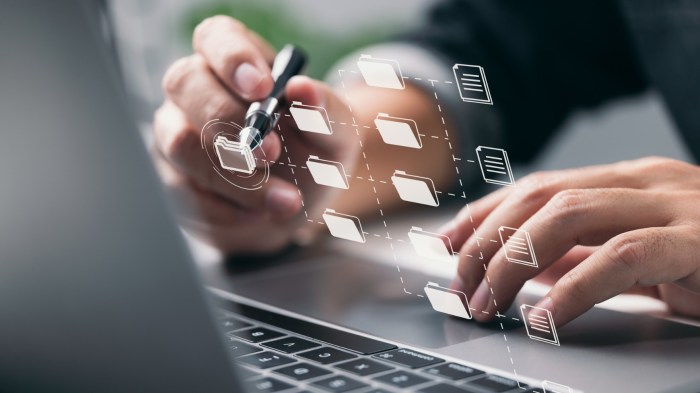Building Email Sequences takes center stage in the world of marketing, offering a powerful tool to engage with subscribers and drive conversions. Get ready to dive into the art of creating compelling email content and automating your sequences for maximum impact.
Introduction to Building Email Sequences

Email sequences are a series of automated emails sent to subscribers at predetermined intervals. They are crucial in marketing as they help businesses nurture leads, build relationships with customers, and drive conversions. By using email sequences, companies can deliver targeted content, stay top of mind, and guide subscribers through the sales funnel.
Benefits of Email Sequences
- Personalized Communication: Email sequences allow for personalized messages based on subscriber behavior and interests.
- Increased Engagement: By sending relevant content at the right time, email sequences can boost subscriber engagement.
- Lead Nurturing: Email sequences help in educating leads about products or services, leading to higher conversion rates.
- Automated Follow-Up: Save time and effort by automating follow-up emails based on subscriber actions.
Examples of Successful Email Sequences
Company A: Company A uses a welcome email series to introduce new subscribers to their products and services, followed by a series of educational emails and promotional offers.
Company B: Company B implements a cart abandonment email sequence to remind customers of the items left in their cart and encourage them to complete the purchase.
Planning Email Sequences

When it comes to planning an email sequence that hits the mark, you gotta have a solid strategy in place. It’s all about knowing your audience, setting clear goals, and delivering value with every email you send.
Segmenting the Audience
To create targeted email sequences that resonate with your audience, you first need to segment them based on their interests, behaviors, and preferences. By dividing your subscribers into different groups, you can tailor your content to meet their specific needs and increase engagement.
- Use data from past interactions to divide your audience into meaningful segments.
- Consider factors like demographics, purchase history, and engagement levels when creating segments.
- Personalize your emails based on segment characteristics to make them more relevant and appealing.
Setting Goals and Objectives
Before you hit send on any email, it’s crucial to define what you want to achieve with your email sequence. Setting clear goals and objectives will not only guide your content creation but also help you measure the success of your campaigns.
- Identify the main purpose of your email sequence, whether it’s driving sales, nurturing leads, or increasing brand awareness.
- Set specific, measurable, achievable, relevant, and time-bound (SMART) goals for each email in the sequence.
- Track key performance indicators (KPIs) like open rates, click-through rates, and conversions to evaluate the effectiveness of your email sequence.
Creating Compelling Email Content
When it comes to creating email content that keeps your audience engaged and interested, there are a few key strategies to keep in mind. From crafting personalized messages to writing attention-grabbing subject lines, every detail matters in the world of email marketing.
Strategies for Creating Engaging and Relevant Content
- Understand your audience: Take the time to research and understand the demographics, preferences, and interests of your target audience to tailor your content accordingly.
- Use storytelling: Incorporate storytelling elements in your emails to make them more relatable and engaging for your readers.
- Include multimedia: Spice up your emails with images, videos, gifs, or infographics to capture your audience’s attention and make your content visually appealing.
Importance of Personalization in Email Content
Personalization is key in email marketing as it helps create a more meaningful connection with your audience. By addressing recipients by their name, segmenting your email list, and sending targeted content based on their preferences, you can increase engagement and drive conversions.
Best Practices for Writing Subject Lines and Email Copy, Building Email Sequences
- Craft compelling subject lines: Keep your subject lines short, catchy, and relevant to entice recipients to open your emails.
- Focus on the preview text: Use the preview text to provide a sneak peek of what’s inside the email and further entice readers to open it.
- Write concise and engaging email copy: Keep your email copy concise, scannable, and to the point, focusing on providing value to your readers and driving action.
Automating Email Sequences: Building Email Sequences
Automating email sequences can be a game-changer for your marketing efforts, saving you time and ensuring timely communication with your audience.
Benefits of Automating Email Sequences
- Consistent Communication: Automation ensures that your audience receives emails at the right intervals, maintaining engagement.
- Time-Saving: Set up your sequences in advance and let the automation do the work for you, freeing up your time for other tasks.
- Personalization: Automation tools allow you to personalize emails based on user behavior, increasing relevance and engagement.
Tools and Software for Automating Email Sequences
There are several tools and software options available to help you automate your email sequences. Some popular choices include:
- Email Marketing Platforms: Platforms like Mailchimp, ConvertKit, and ActiveCampaign offer automation features to streamline your email marketing efforts.
- Marketing Automation Tools: Tools like HubSpot and Marketo provide advanced automation capabilities for email sequences and beyond.
- Customer Relationship Management (CRM) Systems: CRMs like Salesforce and Zoho CRM integrate with email automation tools to enhance customer communication.
Tips for Monitoring and Optimizing Automated Email Sequences
Monitoring and optimizing your automated email sequences is crucial to ensure effectiveness and engagement. Here are some tips:
- Track Key Metrics: Monitor open rates, click-through rates, and conversion rates to gauge the success of your sequences.
- A/B Testing: Test different subject lines, content, and send times to optimize your emails for better results.
- Segmentation: Divide your audience into segments based on behavior or demographics to send more targeted and relevant emails.
- Regularly Review and Update: Keep an eye on your sequences and make adjustments as needed to keep them fresh and effective.
